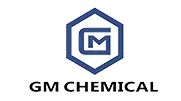Company News
What is the danger of Silane?
Nov. 21, 2020
Silane is a kind of fire at room temperature under normal temperature and pressure; it can burn explosively in air or halogen gas. Its fire and explosion are the result of reaction with oxygen. Silane is very sensitive to oxygen and air, that is, use other gases to dilute, if the concentration is not low enough. Can still ignite spontaneously. When silane contains 2% in argon, 2.5% in nitrogen, and 1% in hydrogen, it can still catch fire. Silane concentration is not combustible when it is less than 1%, spontaneously combusts when it is greater than 3%, and may burn when it is 1% to 3%. As long as it has a certain concentration of silane, it will react explosively with oxygen at a temperature of -180°C.
1.It is a very toxic special gas. How strong is it?
Contact with silane can cause eye irritation. Inhalation can cause headache, nausea, mucous membranes and respiratory tract irritation. Although silane is reported to have an unpleasant smell and a disgusting garlic smell, it should not be used as a warning signal for the presence of dangerous concentrations of gas. When you smell it, you have been caught.

The main danger of silane comes from its ability to spontaneously burn in contact with air and its toxicological properties. And we need to continue silane treatment.
2. Silane Uses
Silane has now become the most important special gas used in semiconductor microelectronics processes for the preparation of various microelectronic films, including single crystal films, microcrystalline, polycrystalline, silicon oxide, silicon nitride, and metal silicides. The microelectronic applications of silane are still developing in depth: low-temperature epitaxy, selective epitaxy, heteroepitaxial. Not only for silicon devices and silicon integrated circuits, but also for compound semiconductor devices (gallium arsenide, silicon carbide, etc.). It also has applications in the preparation of superlattice quantum well materials. It can be said that silane is used in almost all advanced integrated circuit production lines in modern times.
3. The safety risk of silane
Silane is a spontaneous combustion gas with a wide range of combustion, but when it is released into the air, it does not necessarily burn immediately. Sometimes it may not burn at all. Understanding this can allow us to improve the design and operation of the system. Safety, and procedures for response in the event of an accident. The combustion of silane has a considerable relationship with its release method and changes in the surrounding environment. Water mist can reduce smoke and dust, but you must be careful not to extinguish any flames caused by silane. The fire can only be extinguished by cutting off the source of the silane leakage. If the silane flame is extinguished before the source of the silane leak is cut off, the silane will accumulate and cause an explosion. The flammability limit of silane is very wide, and the diluted silane will expand the flammable range instead of reducing the flammable range. The lower limit of the flammable limit of silane is 2%, and the flammable range is much lower than this concentration when different diluents are introduced.
Previous: Crown Ether And Its Application
Next: Succeed to devlop 1-Pyrenecarboxylic acid [19694-02-1] in our lab at kg scale.






